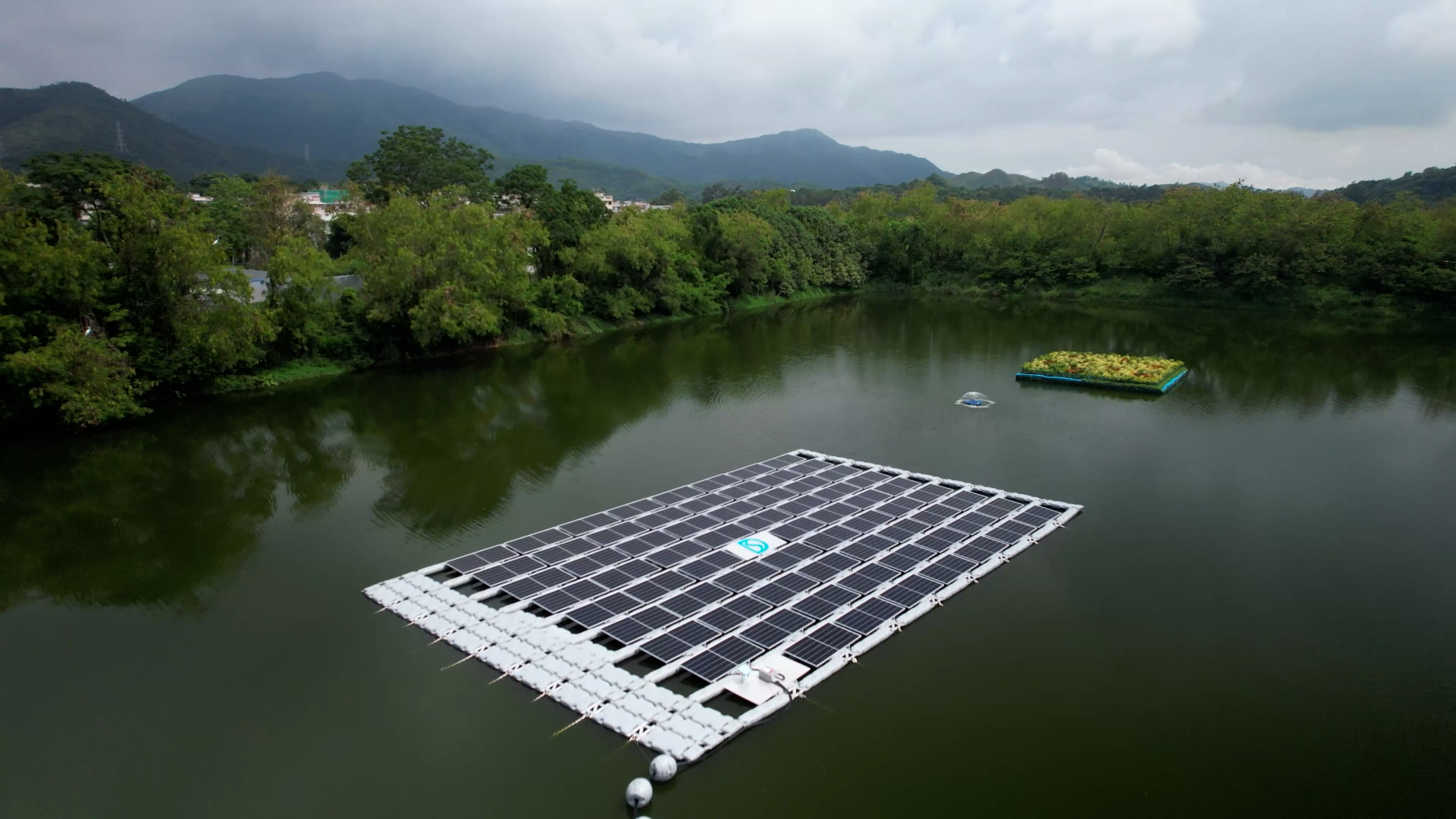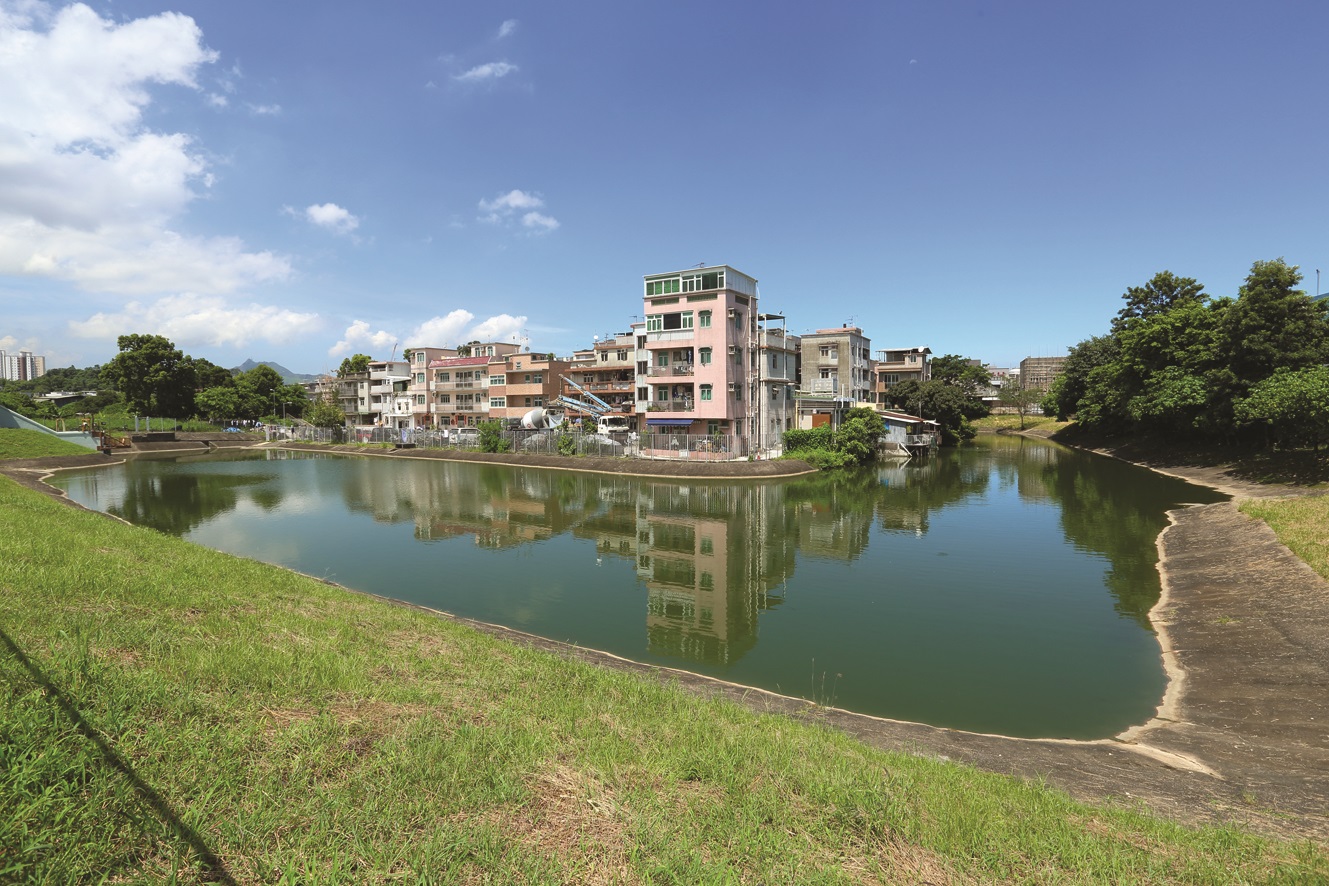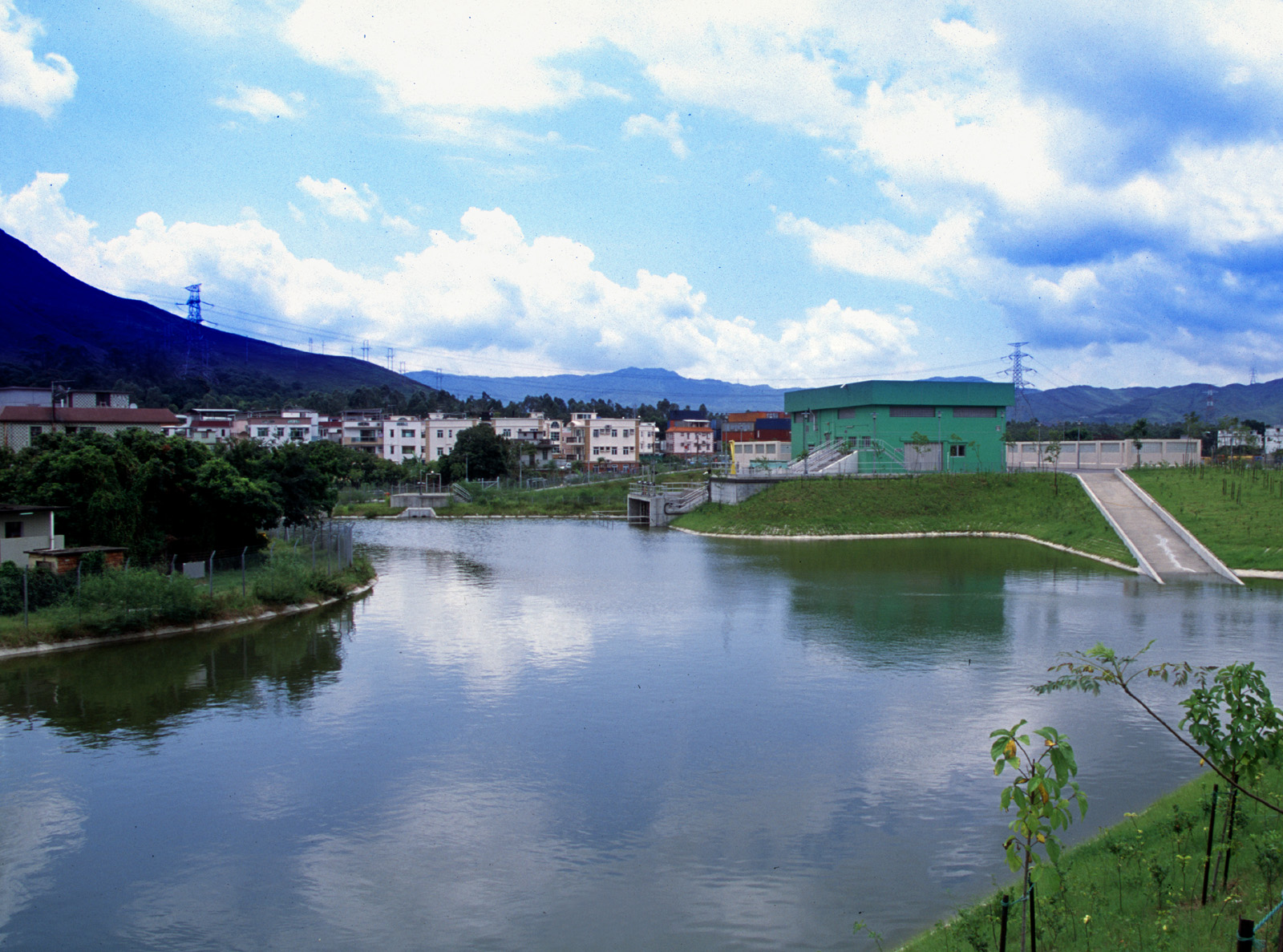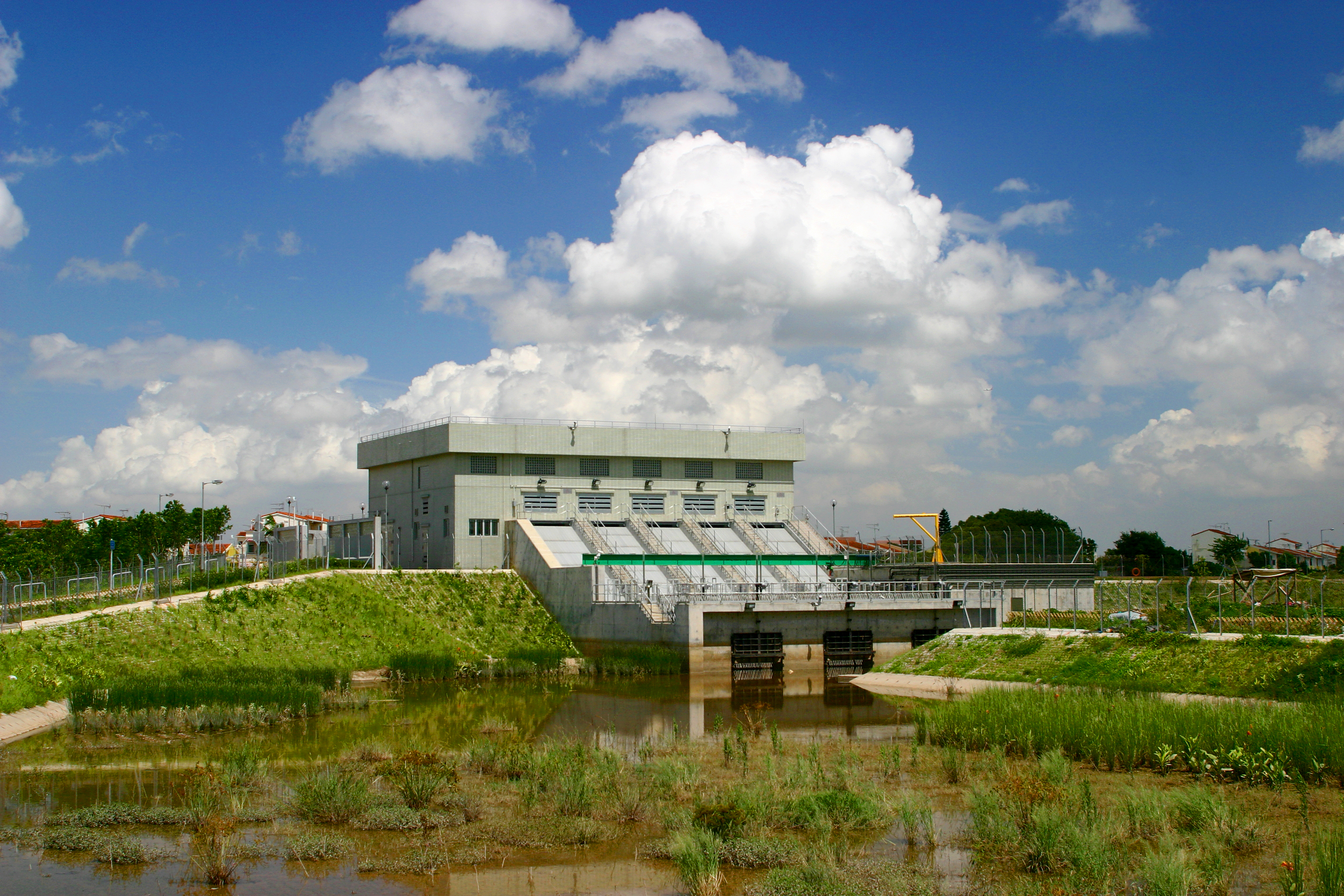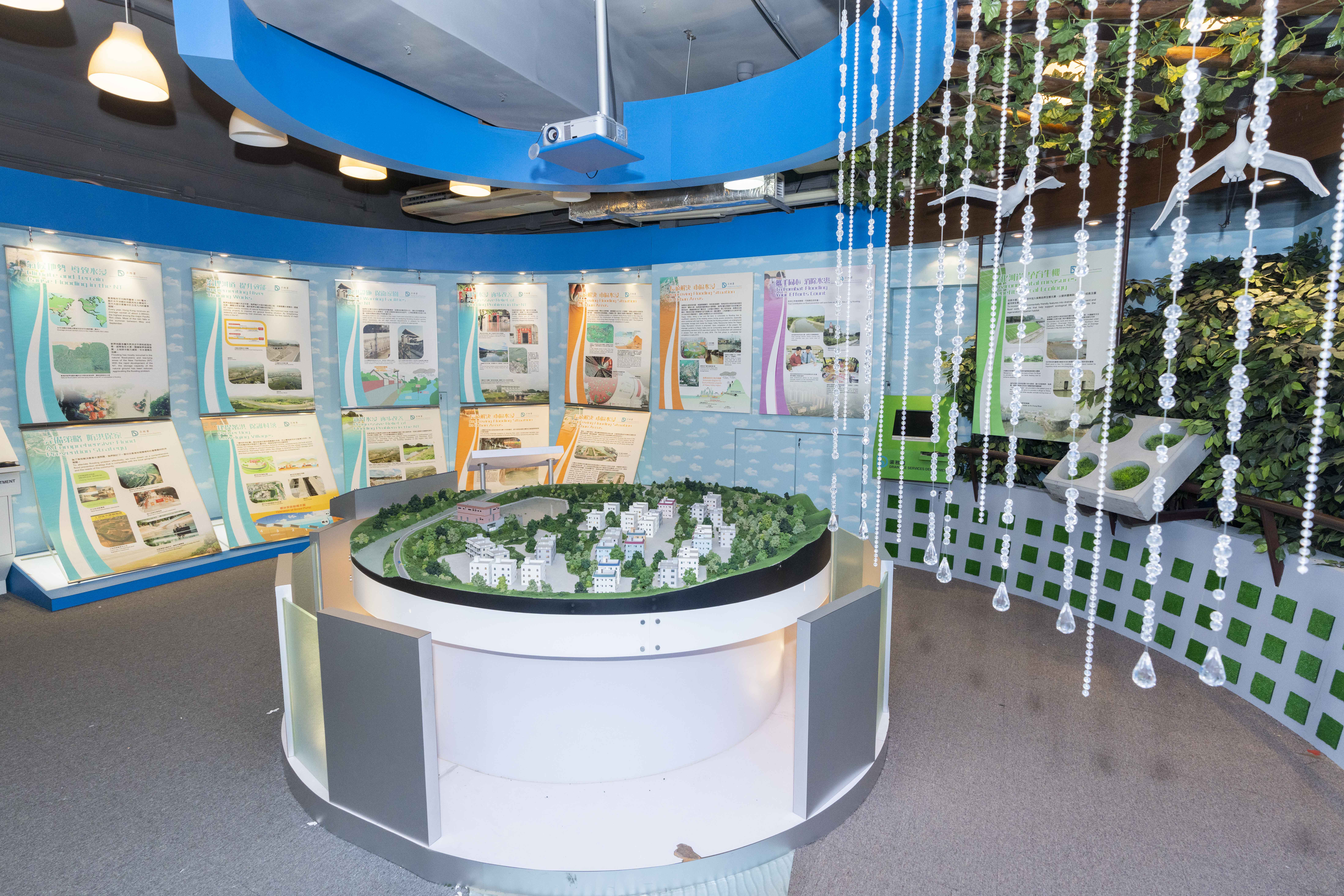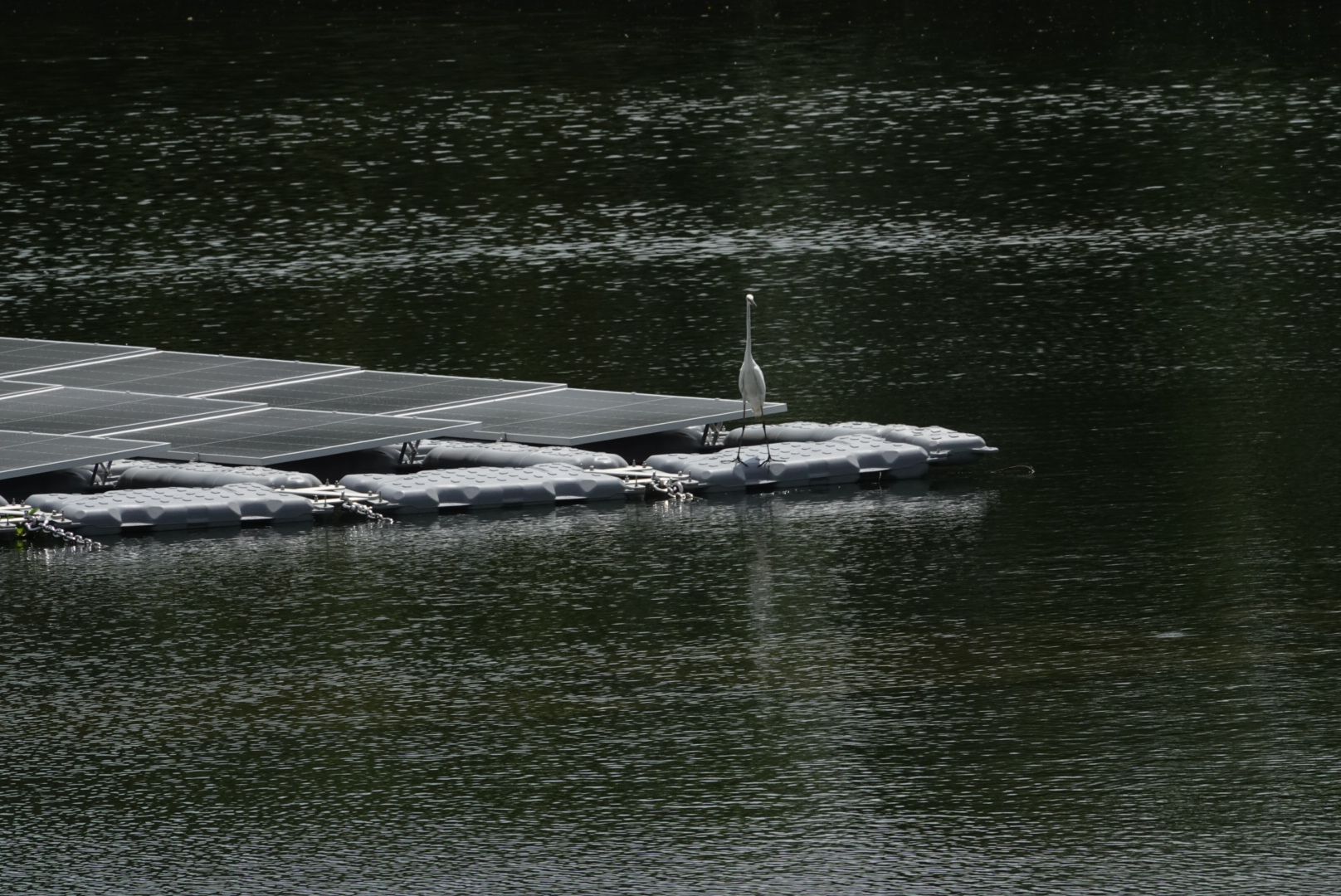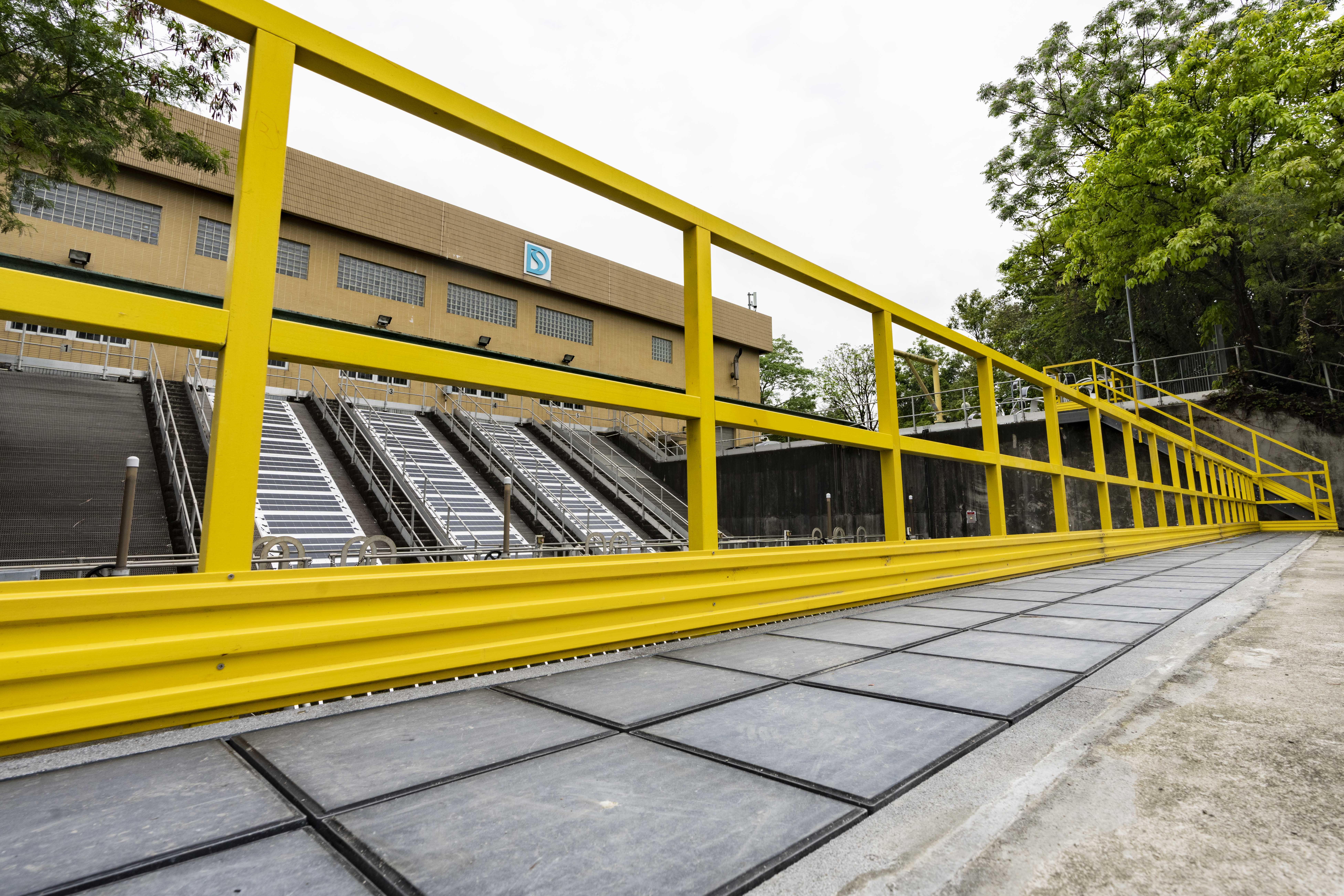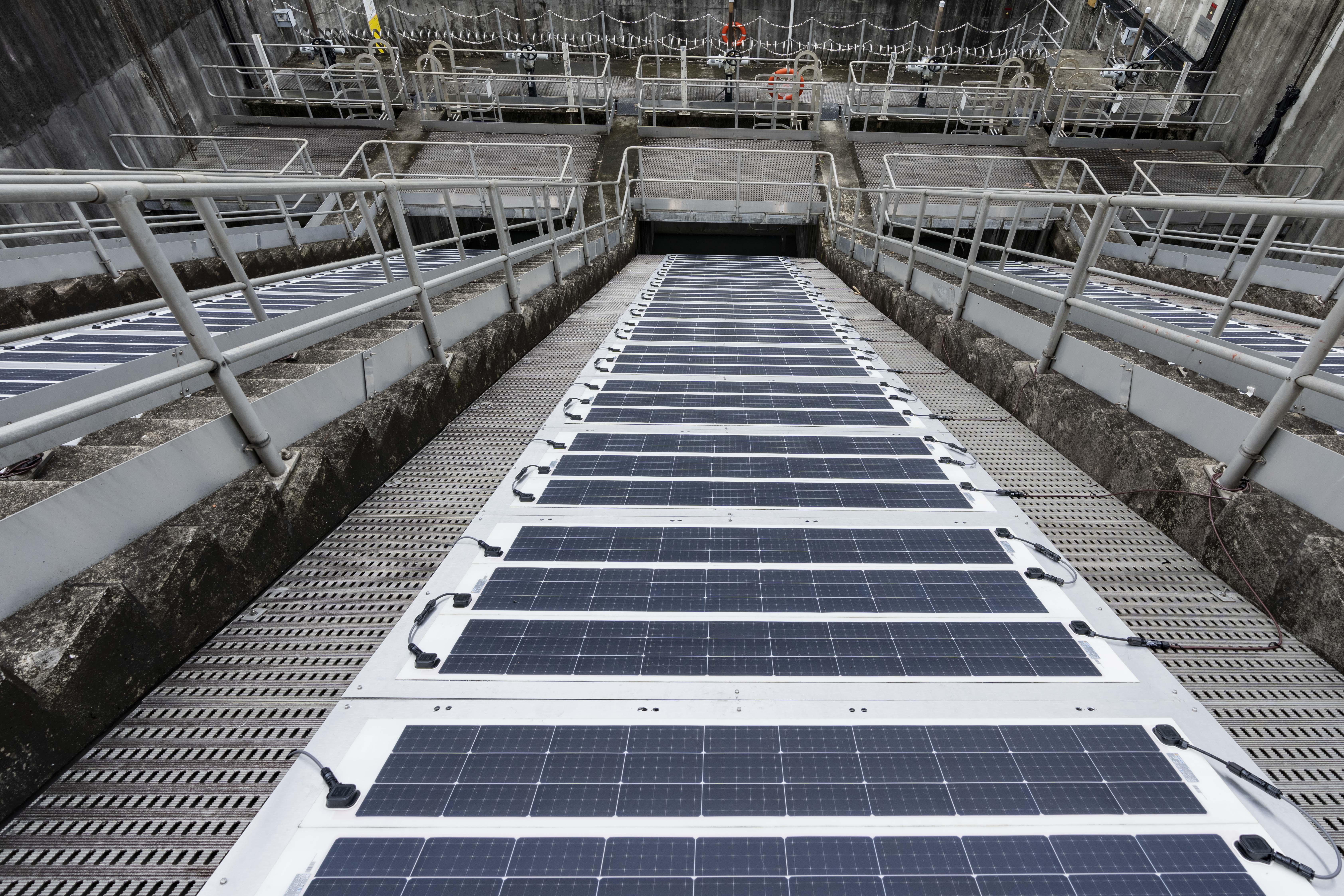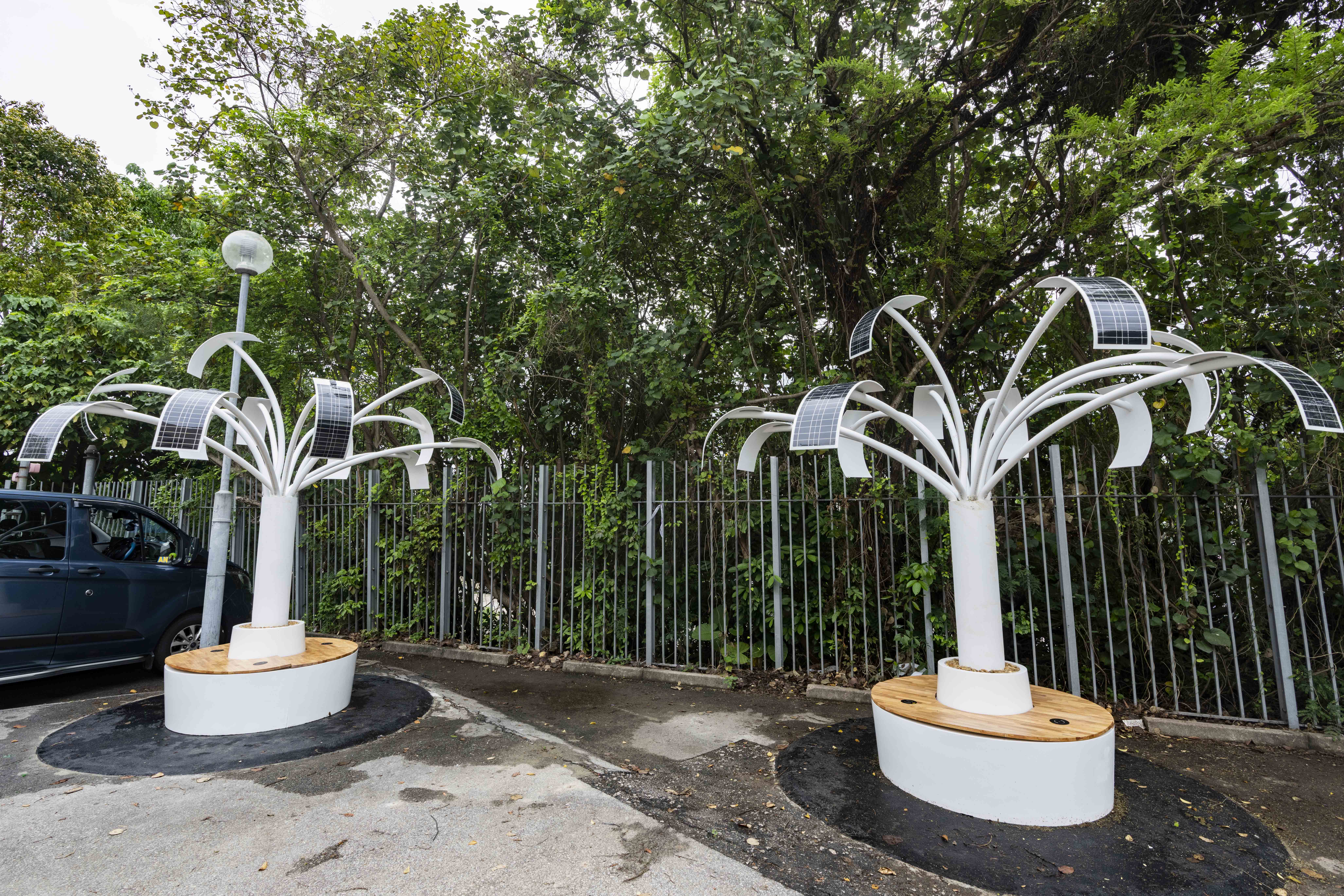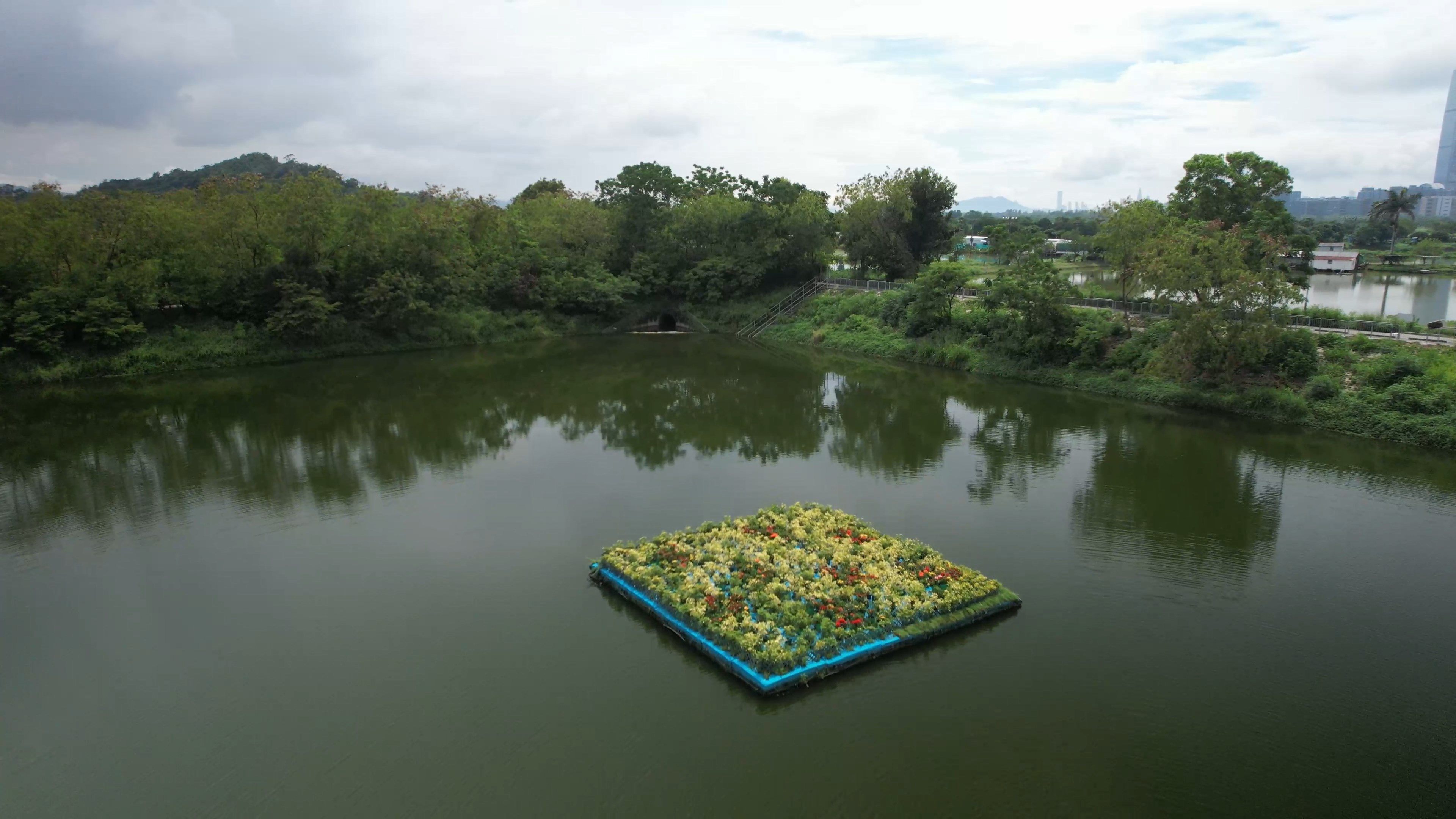San Tin Flood Protection Scheme
Transportation
| Starting Point | Transportation |
|---|---|
|
|
Bus 76K, 276B, 976 |
|
Lok Ma Chau (San Tin) Public Transport Interchange |
Minibus 78 |
|
|
Walk about 13 minutes to reach the San Tin Stormwater Pumping Station |
| Ending Point | Transportation |
|---|---|
|
(same as above) |
Walk about 40 minutes to reach the Lok Ma Chau (San Tin) Public Transport Interchange |
The above transportation traffic routes are for reference only. Actual time required may vary depending to the pace, update/ temporary traffic arrangement of the public route, weather and actual traffic conditions.
Some villages in Hong Kong are located in low-lying areas that flood water cannot effectively be drained by gravity to the primary drainage network, leading to potential floods during heavy rainstorms. To reduce the impact of floods on these villages, the DSD has been implementing Village Flood Protection Schemes. Embankments are constructed around low-lying villages where flood storage ponds and stormwater pumping stations are built in the villages for temporary storage of rainwater during heavy rainstorms and for subsequent discharge of rainwater by pumping after heavy rainstorms. 27 Village Flood Pumping Schemes are currently in operation, providing flood protection for 38 low-lying villages.
Completed in 1999, San Tin Flood Protection Scheme aims at reducing the flood risk of 7 low-lying villages including Tsing Lung Tsuen, Fan Tin Tsuen, On Lung Tsuen, San Lung Tsuen, Tung Chun Wai, Wing Ping Tsuen, and Yan Shau Wai. The scheme covers area of about 510,000 square metres, and protect about 1,200 households with a population of 3,500 at that time against the risk of flooding.
San Tin Flood Protection Scheme constructs the embankment surrounding the villages to keep floodwater away from the village. A stormwater drainage system is also provided within the village area to collect and convey stormwater to a stormwater storage pond. Area of the storage pond is about 16,400 square metres. When the water level in the pond reaches pre-set levels, the pump in the stormwater pumping station will start automatically, water in the pond will be pumped to the adjacent channel outside the embankment.
There are four duty water pumps and one standby water pump in San Tin Stormwater Pumping Station (STSmPS). Pumping rate of each water pump is 2 cubic metre per second (m3/s). Total pumping rate of STSmPS is 8 m3/s, which is equivalent to filling-up a standard swimming pool within around 4 minutes.
All pumps in STSmPS are Archimedes’ screw pump (screw pump). Screw pump is commonly used in stormwater pumping stations and sewage pumping stations in Hong Kong due to its low pump head and high pumping rate. The design of screw pump is robust and simple. It allows passage of large debris and thus does not need complicated screening system. These make screw pump a reliable choice for a pumping station. Screw pump also has an additional feature of self-regulating flow control without any variable speed device, it is a simple and efficient design at times when variable speed device was not yet popular.
STSmPS is operated by automatic system. When water level in the pond rises to pre-set levels, the pumps will start automatically to lower the water level. When water level in the pond lowered down to pre-set levels, the pumps will stop automatically. Thanks to the automatic system, operating staff do not need to stay in the pumping station. Operating staff stay in a remote control centre and monitor the pumping station by remote monitoring and control system. Operating staff will only need to reach the pumping station to perform operation/maintenance work during situations when the automatic system cannot handle. This is essentially a modern operation style to manage large number of facilities with only small number of staff.
San Tin Flood Prevention Information Corner in San Tin Stormwater Pumping Station provides scheduled guided tours for schools and community through a prior application. Through short videos, photos, display panels and physical model, visitors can gain better understanding about Hong Kong’s history and causes of flooding and flood prevention strategies.
To promote public awareness and understanding of the concepts of decarbonisation and sustainable development, the Drainage Services Department (DSD) has implemented a pilot trial of floating photovoltaic systems (FPV) at San Tin Polder, along with other photovoltaic (PV) systems.
The FPV system at San Tin Polder comprises 70 PV panels, with an installed generation capacity of 37 kilowatts, and it is anticipated that the FPV system will generate 37,000 kilowatt-hours of electricity annually. The PV panels are installed on a floating platform that is specifically designed for FPV application, and fabricated with toxic or hazardous free materials. The FPV system utilises the open water surface of the polder to generate renewable energy not only to save precious land resources, but also to reduce the growth of algae in the polder and carbon emissions.
In additional, in order to better utilise the available space, a steppable PV system and a flexible PV system has been installed on the maintenance platform and on the covers of the screw pump channels at San Tin Stormwater Pumping Station respectively. The PV systems at San Tin Stormwater Pumping Station and San Tin Polder (including the floating photovoltaic systems, the steppable PV system and the flexible PV system) are estimated to generate 47,000 kilowatt-hours of electricity annually, equivalent to reducing 32 tonnes of carbon dioxide emissions, or the carbon removal by 1,400 trees.
San Tin Polder is adjacent to the Mai Po Nature Reserve, which attracts a large number of birds. Although San Tin Polder is located in a bird-rich area, in order to attract birds to perch, stay or rest at San Tin Polder, the DSD built an ecological floating island at the Polder to provide a resting place for the birds and enrich the ecological environment.
The area of the ecological floating island is about 100 square meters. The major component of the floating Island is about 0.5 meters thick and consists of polyester fiber layer, plant fiber layer and EVA floating layer. The outer layer of the floating island is wrapped with geotextile. Flowering plants are planted on the ecological floating island, creating a suitable environment for birds to stay and inhabit in the polder to improve the ecology, as well as providing nectar to attract butterflies and dragonflies to increase the biodiversity.

